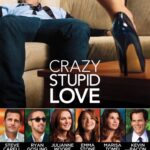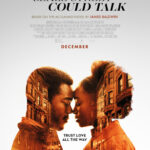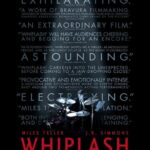Here’s To The Fools Who Dream
Director
Damien Chazelle
Starring
Emma Stone
Ryan Gosling
Mia [Stone] is a young aspiring actress in Los Angeles, holding down a job as a film studio barista while auditioning for various crap roles that go nowhere. At the same time, we are introduced to supercilious jazz pianist Sebastian [Gosling], who has trouble maintaining employment due to his frustration with other people’s dire, inoffensive playlists. The two bump into each throughout the city at various venues and functions before eventually starting a promising relationship.
In an age when gritty realism is pushed as paramount, there’s something refreshing about an excessively colourful, flamboyant, insanely romantic fantasy. La La Land excels solely because of everything that came before it; it is both a welcome change and part of the growing problem that is the nostalgia-mill, churning out the same old stuff over and over. Everything about this movie is a welcome treat and yet I’ve seen it all before, the drama is fantastical and somewhat cliché, the romance is based on a single perspective point of view and even the chemistry between the leads was already played out brilliantly in Crazy, Stupid, Love. But I’m getting ahead of myself. If nothing else, La La Land is a love letter to old Hollywood. Not just the setting and the clothes but the long uncut shots and choice to film in cinemascope evoke a feeling of the 1950’s. More than that, it gives you clues and even openly shows you some of its influences before proudly proclaiming, “I love this town!” It’s a passionate creation born of an idyllic and possibly naïve representation of a place that simply cannot be, grounded by a relationship which audiences can either relate to or longingly dream about.
As you may have gathered from the synopsis, the story itself is incredibly basic, not only in its execution but its scope. A talented boy meets a talented girl, both have difficulties gaining recognition in their respective pursuits, their relationship blossoms and eventually they have to choose between which brings them the greater level of happiness and satisfaction: the love or the craft. But in its simplistic narrative is the scope for projected relatability, allowing the audience to mirror their own lost opportunities or abandoned dreams, no matter how disparate. As with many passion projects about the creative industry, the script openly deals with the director’s concerns about producing something so nostalgic, self-serving and potentially hated, to which Gosling’s character gives the appropriate response: fuck ’em. Chazelle loves musicals and clearly has a certain penchant for jazz. Rather than shy away from this, the script justifies this fondness by stating that “people love what other people are passionate about” then builds on this arguable truth by talking vibrantly about the history and importance of jazz as an art form which is dying because contemporary audiences don’t appreciate it. Sebastian is so driven in his desire to revive this style that he explains he will open a club where they will play whatever they want as long as it’s pure (paralleled by the earnestness of the script Mia is writing) which is, again, Chazelle telling the audience, the professionals and the very intangible industry itself that he will make what he loves and that’s how it should be. And he’s completely fucking right and I applaud such a statement.. but I still don’t like jazz.
From a technical standpoint, the film is a wonder. The cinematography is great, the direction is delightfully evocative, the production design creates this somewhat non-existent hybrid of a 1950s that never was and a 2010s that exists for a select few. More than that, and crucially for musicals, the sound work is on point. The songs are fantastic but the crew would have had to be on their sharpest guard, thanks to Chazelle’s insistence on utilising old school, more theatre-based visuals. Case in point, early on in the film we are treated to a six minute scene wherein Sebastian walks Mia to her car after a party. The scene is a simple, coy, getting-to-know-you interaction and subtly evolves into a flirtatious tap sequence with a sprawling purple twilight as a backdrop. I don’t think it’s ever really made apparent but the whole sequence is shot continuously. Long shots aren’t unheard of but ones set outside during specific lighting is incredibly demanding and the amount of preparation and discipline involved is an incredible testament to talent.
But as much as everyone will fawn over this release, it has a few core problems that weave throughout; the biggest of which is the blinkered focus. So, like all people in love, the world outside of their own doesn’t exist. We are selfish beings and when something monumental happens to us, the world and its complexities are slung out the window. In this regard, one could justify the lack of supporting characters and subplots but without them, the film is very rigid. A handful of individuals crop up but their motivations and interactions with our leads feel incredibly forced, as if they are simply waiting in the wings to be summoned on stage for but a moment, then ushered back into meaningless obscurity just as quickly. I could also fault Gosling and Stone’s musical abilities, in comparison to a fully trained professional but that doesn’t feel at all necessary and I think both did a tremendous job. And yet, because of this Sebastian-Mia-centric story we aren’t even treated to lengthy routines by other individuals. Everything comes down to their singing, dancing and instrument playing to the degree that any supporting musical act is tuned out by the audience so we can focus on the main exchanges. The film also tries to replicate the optimism of the 1950s but update it with some 21st century pragmatism. In doing so, La La Land will be surprisingly bittersweet for a great many but not enough in my mind. The banking crisis of 2008 led to a disenfranchised generational split in terms of finances, politics and quality of life, the idea of your dream coming true (even at a cost, as the film tries to highlight) feels like distant fantasy. It makes it more frustrating when Sebastian is told “How are you going to be a revolutionary when you’re such a traditionalist?” but seems to garner immense personal success through both routes. What I’m getting at is that by setting the film in contemporary LA, you have to adopt a bit of a rose-tinted view and the audience is already bitter, so any bittersweet finale may feel more optimistic than some would want.
Ultimately, this is a very fun release with two painfully charming performances and a simple endearing story. It’s not going to convert anyone who doesn’t like musicals but as an expression of devotion for a genre and style on life-support, it’s very successful. More than that, the behind-the-scenes drama of getting this release made in the first place, followed by its whirlwind success story, proves that those in the industry with the keys to success are pretty useless and can’t predict anything; for that alone, the film shines marvellously.
Release Date:
13th January 2017
The Scene To Look Out For:
**biggest spoiler there is for this film**
One of the reasons everyone is praising this movie is the feeling they leave the cinema with. Chazelle has a keen understanding of this and utislised it just as brilliantly in Whiplash. The whole film builds to one blow-out bold final scene which is frankly magnificent. The strain of the relationship and their budding careers proves too much and Sebastian, having faith that Mia will succeed in her cinematic venture, states that this is how they end. Both profess their love for one another and we jump five years ahead. Mia is a successful actress, revered with the same awe that she placed upon others before her big break. In addition to success, she is also happily married with a child. One evening, her husband notes a club and they investigate. Mia is struck when she recognises the logo as something she designed for Sebastian years prior. Sure enough, his dream club is a hit and plays the exact music that he has always wanted. Catching her eyes, Sebastian is caught off guard and plays a song. The song starts simply enough and transports the audience back to when they first met but we replay every action with an impossibly perfect veneer, it’s the life that never was and never could be, their relationship described, through music, dance and fantastic set design without conflict, all the way through to a fictional marriage, offspring and even to the extent that the happy Mia and Sebastian stumble into the same club to listen to someone else playing the emotionally-charged music. And as the song draws to a close, the sorrowful tones lament what never transpired and before Mia exits, they share one final look and a tiny smile. That scene, in all its exceptional flare, is the reason people will love this movie. Bravo, Mr. Chazelle. Bravo.
Notable Characters:
As I stated, a great flaw of this film is the complete lack of supporting characters and to my mind neither Stone or Gosling outperformed one another. So who am I supposed to highlight? JK Simmons, that’s who. He had a tiny role but he was very funny, so Simmons.
Highlighted Quote:
“Can you believe they turned it into a samba tapas place? Samba. Tapas. Pick one, do it right”
In A Few Words:
“La La Land is that seemingly perfect couple you really want to hate but can’t help but adore. It emulates to a fault but that’s probably its only flaw”
Total Score: 3/5
![The Red Right Hand Movie Reviews [Matthew Stogdon]](https://reviews.theredrighthand.co.uk/wp-content/uploads/2021/12/cropped-header1.png)




